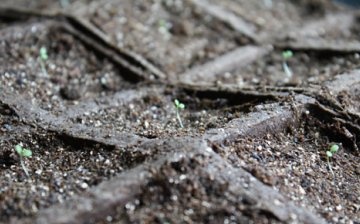Sowing petunia seeds. Highlights in short
The beautiful lady petunia reproduces mainly by seeds. It can be sown in different ways, depending on the desired flowering time. And, of course, take into account the climatic conditions of your geographic location. This is most often done around mid-March. Then flowering seedlings can be obtained at the end of May. But other options are also possible. For example, winter sowing of petunia seeds.
To have ready-made seedlings in early to mid-April, sowing should be done at the end of January.
Small plastic or wooden boxes are suitable for this purpose. The bottom is covered with thick paper, and then the soil is covered. Almost any soil with peat will do for petunias, as long as it is not strongly alkaline or acidic.
Having laid out the earth, the seeds are placed on top and sprinkled quite a bit (1-2 mm.) Or they are left like that. Growing in this way makes maintenance easier and accelerates seed germination. By the way, it is better to choose a product from trusted firms, rather than collecting seeds from hands on the market. Then the number of sprouts that have appeared will definitely not disappoint you.
After sowing, the future petunia is sprayed from a spray bottle with water at room temperature or a light solution of potassium permanganate. Cover with glass and leave in a semi-dark place to germinate at a temperature of approximately 20-23 degrees. When the greenery has already appeared, then you can expose it to the sun.
Do not get carried away with watering so that the seedlings do not get sick. At the age of 2-4 true sheets, they can already be transplanted into separate pots. And feed them to grow and bush better. Complex water-soluble fertilizers are best suited for this.



